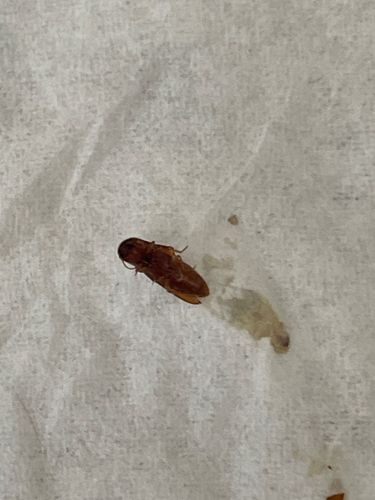Click Beetle
Scientific Name: Elateridae (family)
Order & Family: Order: Coleoptera, Family: Elateridae
Size: Typically 5 mm to 60 mm (0.2 to 2.4 inches), depending on the species.

Natural Habitat
Click beetles are found in a wide variety of habitats, including forests, woodlands, grasslands, agricultural fields, gardens, and urban areas. Adults can be found on vegetation, under bark, or attracted to lights at night. Wireworms live underground in soil.
Diet & Feeding
Adult click beetles typically feed on pollen, nectar, plant sap, or sometimes small insects. Larvae, known as wireworms, are primarily herbivorous and feed on underground plant parts like roots, seeds, and tubers. Some wireworm species are predacious, eating other soil insects.
Behavior Patterns
Click beetles are known for their unique 'click' mechanism used to right themselves when overturned or to escape predators. They can flip into the air with an audible click by arching their back and snapping a spine-like prosternal process into a groove on the mesosternum. Many species are nocturnal and attracted to lights. Larvae (wireworms) can spend several years in the soil.
Risks & Benefits
Potential risks mainly come from their larval stage. Wireworms can be significant agricultural pests, causing damage to crops such as corn, wheat, potatoes, and various vegetables by feeding on seeds and roots, leading to reduced yields. Benefits include some species being predators of other pest insects in their larval stage, and adults contributing to pollination. They are generally harmless to humans, though their 'click' can be startling.
Identified on: 8/13/2025